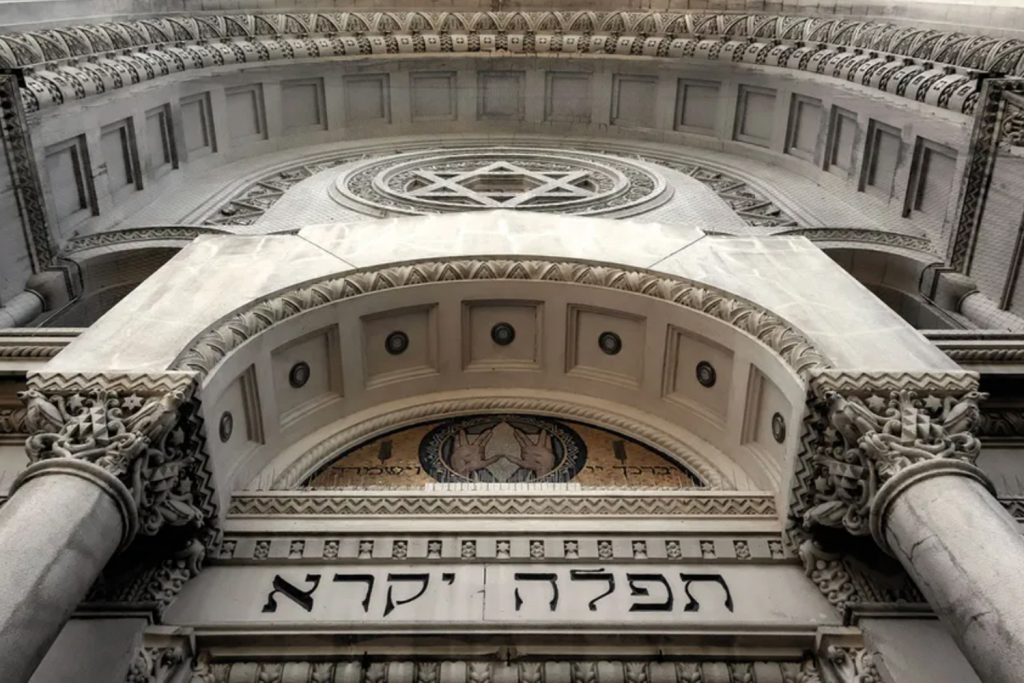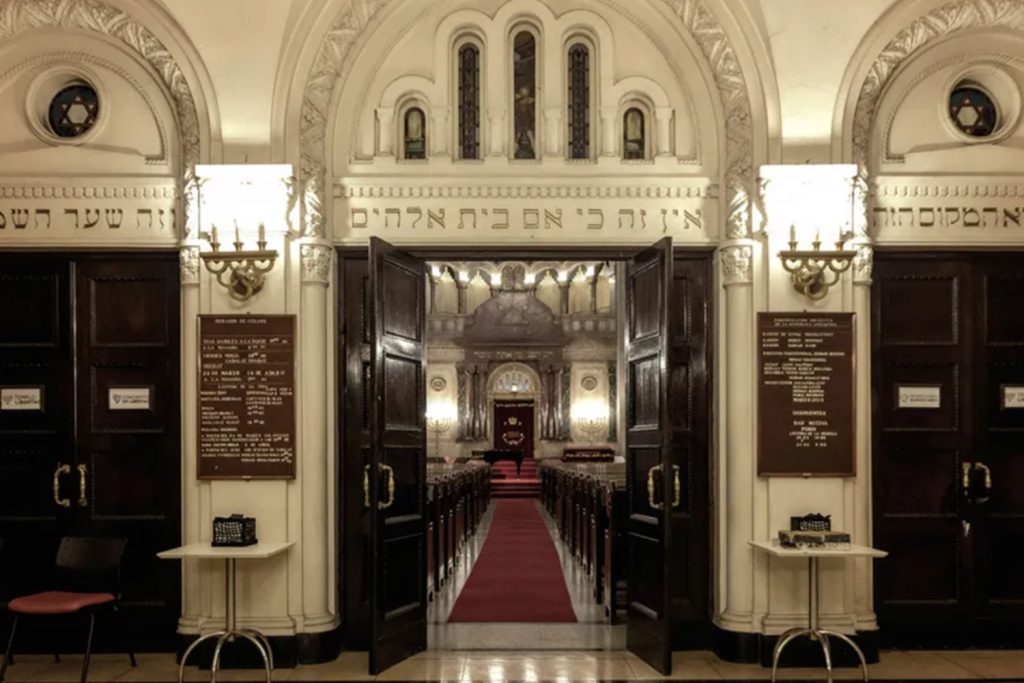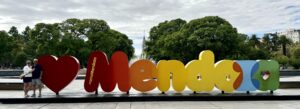Libertad Synagogue in Buenos Aires
Libertad Synagogue enjoys a vibrant history in Buenos Aires City dating back to the early 1800s and it is proud of its rich and well-documented past.
The history of Argentinean Jewry begins with a legend: the story tells that by the end of 1862, on the occasion of the High Holidays, the first minyan in Buenos Aires was gathered. Even though its members had been anonymous, they were responsible for putting down the roots of the communal life in Argentina, and as a result of their initiative some years later the Israelite Congregation of Argentina (CIRA) was founded.

The origins of a Jewish quarter and Libertad Synagogue
At the beginning of the 19th century, the present-day Lavalle square was a vacant lot that became important due to the installation of the Artillery Park. Around 1857, with the inauguration of the train station in the place where the Colon Theater is located today, the landscape was transformed until it became an important center of urban circulation. Plaza Lavalle was one of the most attractive spots for recently arrived Ashkenazi Jews from Eastern Europe.
In 1895, 62% of the Jews lived in the area limited by Lavalle, Viamonte, Libertad and Talcahuano streets. It was there that the first ethnic restaurants, libraries, precarious workshops arose, and the Yiddish press took its initial steps. In this vibrant environment, the Israelite Congregation (CIRA) stood out, established in 1862 by a small group of Jewish immigrants of French, German and English origin. Its temple, erected in 1897 on Libertad street, was the first in the city. During the festivities, the tall galleys of the men of the Congregation mixed with the caps of the humblest.
As a result of the wide range of Jewish immigrants who arrived in the country between 1920 and 1930, there was a need to broaden the goals of the organization and also to enlarge the facilities of the synagogue. Thus, in 1932, the new building was founded.

About the stunning architecture of Libertad Synagogue
Its cornerstone is from 1897 but the current headquarters belongs to a new building built in 1932.
The work could be carried out thanks to the important economic contribution of the Austrian businessman Max Glücksmann, who lived in Argentina for work, in part, due to his activity as a representative of the German record company Odeón. His passion for music and his cultivated knowledge of architecture were the reason why Glücksmann worked closely on the design of the synagogue together with the commissioned architect Alejandro Enquin, with whom they shared the same taste and constructive interests.
In the Jewish liturgy, music is one of the key elements. That is why Glücksmann insisted that the ceiling be vaulted to achieve outstanding acoustics that would allow one to enjoy the sound of the tubular organ that he had installed in 1931: a spectacular German Walker-brand instrument that today is one of the three that survive in the world, due to because the others were destroyed by Nazism during World War II.
With an austere aesthetic, the style of the work ranges from Romanesque to Byzantine with one foot set in Art Deco, the quintessential architectural style of the time. There is a great influence from the synagogues of northern France and southern Germany. The semicircular Roman arch is the main element that is repeated throughout the construction. Even at the base of the chandelier – in Romanesque style – that crowns the space, the arches are also repeated.
The synagogue has been named a historical monument by the city government.
The facilities include a museum that addresses the history of the community, exhibits of a diverse range of items related to Judaism, a kosher restaurant, and of course, the synagogue. Within the synagogue two Conservative minyanim are carried out, one traditional and one egalitarian.
We invite you to attend the Kabbalat Shabbat services of the egalitarian minyan every Friday of the year at 7:30 p.m. The daily trades take place in the auxiliary temple, you can send us an email to check the updated schedules.
Keep in mind that for security reasons, it is necessary to present an original passport or ID at the time of admission.

Jewish Museum of Buenos Aires “Salvador Kibrick”
The museum was the first of its kind in Latin America and is located next to Argentina’s first synagogue in Calle Libertad, in the old Jewish neighborhood.
The museum was founded in 1967 by Doctor Salvador Kibrick, member of the Congregación Israelita de la República Argentina. He was the first person to donate personal objects to the collection, including torah scrolls, siddurim, paintings, religious objects, old books, coins, and mezuzot.
The Jewish museum of Buenos Aires narrates the stories of the immigrants, our traditions and the Jewish colonies. Committed to transmit what is characteristic of the Jewish people, we present an interactive tour through a permanent collection in constant dialogue with the present aiming to create a link between the exhibition and interpretation.
The museum is open Mondays through Fridays from 10am to 6pm. It’s mandatory to present your original passport upon entry. Photocopies and digital photographs will not be accepted.







No comment yet, add your voice below!